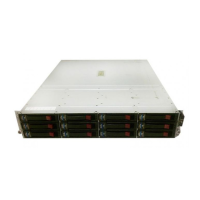HP OpenVMS SAN rules
This section describes the SAN rules for HP OpenVMS.
For current storage system support, see the SPOCK website at http://www.hp.com/storage/spock.
You must sign up for an HP Passport to enable access.
Table 98 describes the SAN configuration rules for HP OpenVMS. Table 99 describes support for
HP OpenVMS multipathing coexistence.
Table 98 HP OpenVMS SAN configuration rules
OpenVMS SAN rulesStorage systems
1
• Zoning is required when OpenVMS is used in a heterogeneous SAN with other operating systems.
• Supports OpenVMS Clusters.
• Supports active/active and active/passive failover mode. A multipathing driver is embedded in the
operating system.
• Supports boot from SAN. For more information, see “EVA SAN boot support” on page 256 and “XP
and VA SAN boot support” on page 268.
• Supports multipathing high-availability configuration in multiple fabrics or in a single fabric with
zoned paths.
All supported
• For HP Continuous Access EVA configuration information, see “HP Continuous Access EVA SAN in-
tegration” on page 254.
EVA6100
EVA6400
EVA8000
EVA8100
EVA8400
EVA3000
EVA4000
EVA4100
EVA4400
EVA5000
EVA6000
• Host name profile must be set to OpenVMS.
• OpenVMS uid must be set on all volumes mapped to a OpenVMS host.
• LUN ID 0 is not available for OpenVMS hosts.
MSA2000fc G2
(MSA2300fc)
• Requires a dedicated MSA1000.
• Supports standalone servers or clusters with a maximum of 8 nodes.
• Contact an HP storage representative for required operating system patches.
MSA1000
1
Unlisted but supported storage systems have no additional SAN configuration restrictions. For the latest support information, contact an
HP storage representative.
Heterogeneous server rules214

